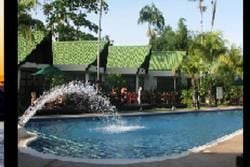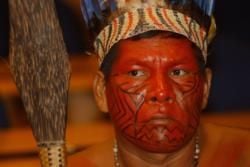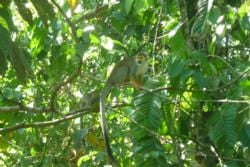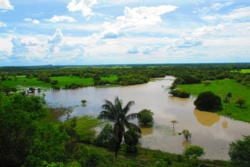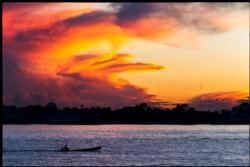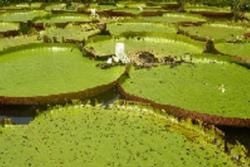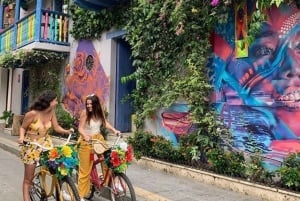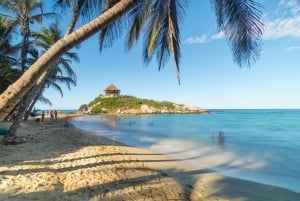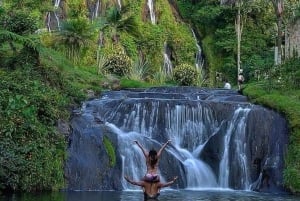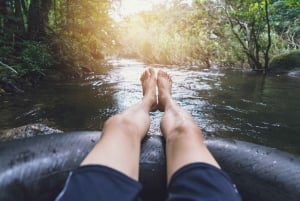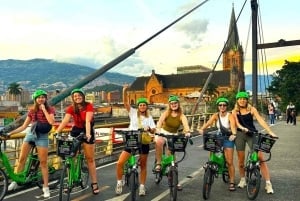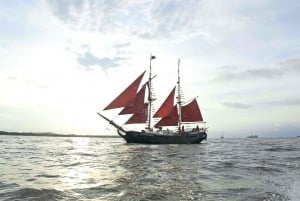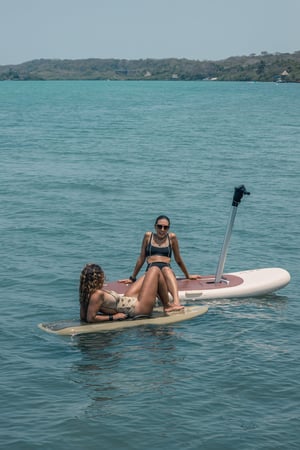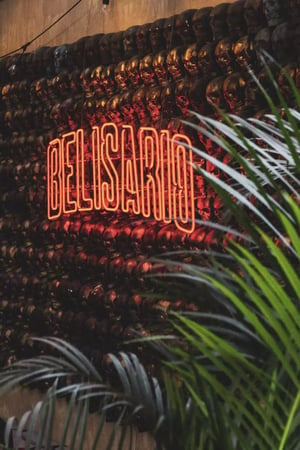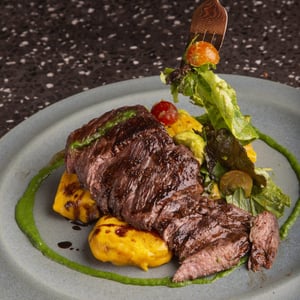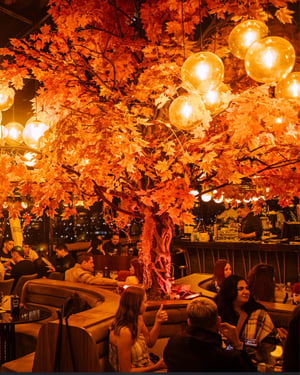Amazon Region
The Amazon region comprises 42% of the Colombian territory, making it the least populated area of the country.
This region consists of six departments: Caqueta, Guaviare, Amazonas, Guainia, Vaupes and Putumayo. Their respective capitals are, Florencia, San Jose del Guaviare, Leticia, Puerto Inirida, Mitu and Mocoa.
The area has some of the most beautiful natural treasures of the country, besides being the habitat of some of the indigenous communities that still survive in Colombia, preserving their origins and culture.
Photo by : Pedro Szekeli - Wikimedia
Leticia: Capital of the Department of Amazonas, Leticia is the link point with Bogotá, capital of Colombia, and other international destinations in the Peruvian and Brazilian Amazons. It offers the chance to swim in the jungle, or simply enjoy the infrastructure of the city. It is the junction point for the three countries that share the Amazon: Colombia, Brazil and Peru. The city itself is situated in the left bank of the Amazon River, one of the largest rivers in the world, and offers many touristic attractions. Although its urban area is not extensive, the flora and fauna is of recognised global importance.
Photo by : Angela Contreras - Wikimedia
These are some of the activities on offer in Leticia:
- Ethnographic Museum of the Amazon Man: This has a wide collection of objects, representing indigenous groups of the Amazon. These objects were used in rituals, ceremonies and economic farming.
- Parque Santander: Located in the city centre, this is where parrots come every afternoon to rest in the trees. The parish of Nuestra Señora de la Paz is located in this park, with a cathedral that offers panoramic views.
- Yahuarcaca Lakes: The main attraction here is paddling in the lakes, while enjoying an exotic landscape. You'll cruise past rubber trees, red cedar, mahogany and capirona. You'll also spot a number of fauna birds, such as herons, tuqui-tuqui, needle ducks, martins, fishers, jays, orioles, eagles and hawks, as well as sloths, and gray and pink dolphins during certain times of the year. A variety of plants grow in the region, particularly the famous Victoria Regia (the world's largest lotus) and the renaco (a tree with aerial roots).
- Tourist Malecon: Not only is this an ideal place to admire the sunset and the Amazon River, it also grants access to vessels that provide water transport service. It is situated on one side of the Malecon Plaza shopping centre, where you can find plenty of food and stores.
- Indigenous Community Hitoma or Kilometre Seven: Hitoma community is seven kilometres from Leticia, belonging to the huitoto culture. The chief, Hitoma Safiama, illustrates to visitors about the customs of their group and how they protect nature, their religious ideas, the maloca (indigenous housing), the manguare (media), the influence of the animal in man, and offers a sample of dances.
- Indigenous Community Monilla Amena: There is 80% primary forest and 20% of secondary forest and farms in its 142 acres of land, where they plant subsistence crops such as yucca, banana, sweet potato, pineapple and sugarcane. Here you can learn about the biodiversity of the Amazon jungle and enjoy it with the indigenous community. The community welcomes visitors and tourists in the main maloca, which is home to the Indigenous chief.
- Tanimboca and Serpentario Reserve: Located 11.5 km from Leticia, the reserve provides ecotourism and adventure tourism with low environmental impact. The nature trails run through marsh ecosystems and the areas where the Yaguarkaka arroyo crosses. You'll spot a wide variety of timber trees, medicinal plants, vines, bromeliads, heliconias, palm orchids and palms. It is common to spot primates, such as the night monkey, the saimire, the white boqui, the sloth of two and three fingers, the maicero and the little lions; as well as mammals such as the guara, the boruga, the armadillo deer, porcupines and bats. Activities include climbing a 35-metre high tree canopy, or a visit to the snake vivarium, which hosts live snakes and displays a large black caiman.
Photo by : Luis Gomez
- Tacana Community: Here you can lodge with natives in the middle of the jungle. Tours of the neighbourhood are allowed in the company of Indians. You can also enjoy fishing in the river of the same name.
- Aguas Claras Natural Reserve: This reserve can be accessed by boat in the rainy season and is located 18 kilometres from Leticia. Visitors' can enjoy walks along nature trails in the woods or bird watching with an expert guide. You can also fish or take a river swim while enjoying the typical Amazon gastronomy. The reserve is part of the Natural Reserve Network of the Node Amazon-Civil Society.
- Monkey Island: The island is located 35 kilometres from Leticia and about 45 minutes along the Amazon River. The elevated walkways allow you to learn about the environment of the island and its inhabitants. The tours, accompanied by indigenous environmental interpreters, will teach you about the history of the monkeys on the island and the different species that live there.
Photo by : Fabio Rodrigues Pozzebom ABr - Wikimedia
- Victoria Regia Reserve: This reserve is located seven kilometres from Leticia by river, a distance that can vary between 15 and 20 minutes, where you'll find an abundance of aquatic plants with circular leaves. There is a wide diversity of flora and fauna, which you can learn about on one of the many canoe tours that are operated in the reserve. A trail enters into the jungle and it is typical to spot animals like parrots and monkeys, wild plants such as heliconias, and the lotus flower.
- Comunidad Indígena Los Yaguas: Located one hour from Leticia, this community resides near the Colombian-Peruvian border, near the Brazilian port of Tabatinga.
- Parque Nacional Natural Amacayacu: Located 60 kilometres from Leticia, this park is situated upstream of the river. It was created in 1975 and has an area of approximately 300,000 hectares. Its name means 'River of Hammocks', and you can do activities such as fishing, walking, and observing the flora and fauna. The visitor centre offers tours where you can see animals from elevated platforms. Macaws and parrots are among more than 500 species of birds; the pink dolphin, manatee, otter, tapir, jaguar and tamarin lion are among more than 150 species of mammals; the black caiman, the tortoise, and the sweetwater turtle are among the copious amount of reptiles.
- Border Line: One of the attractions of the region is visiting the imaginary border between Colombia, Peru and Brazil. A boat ride will take you there, which departs from Leticia and runs down the Amazon River, crossing the Zaraiva, Terezinha, Laguiño Lakes and Laguna Grande.



